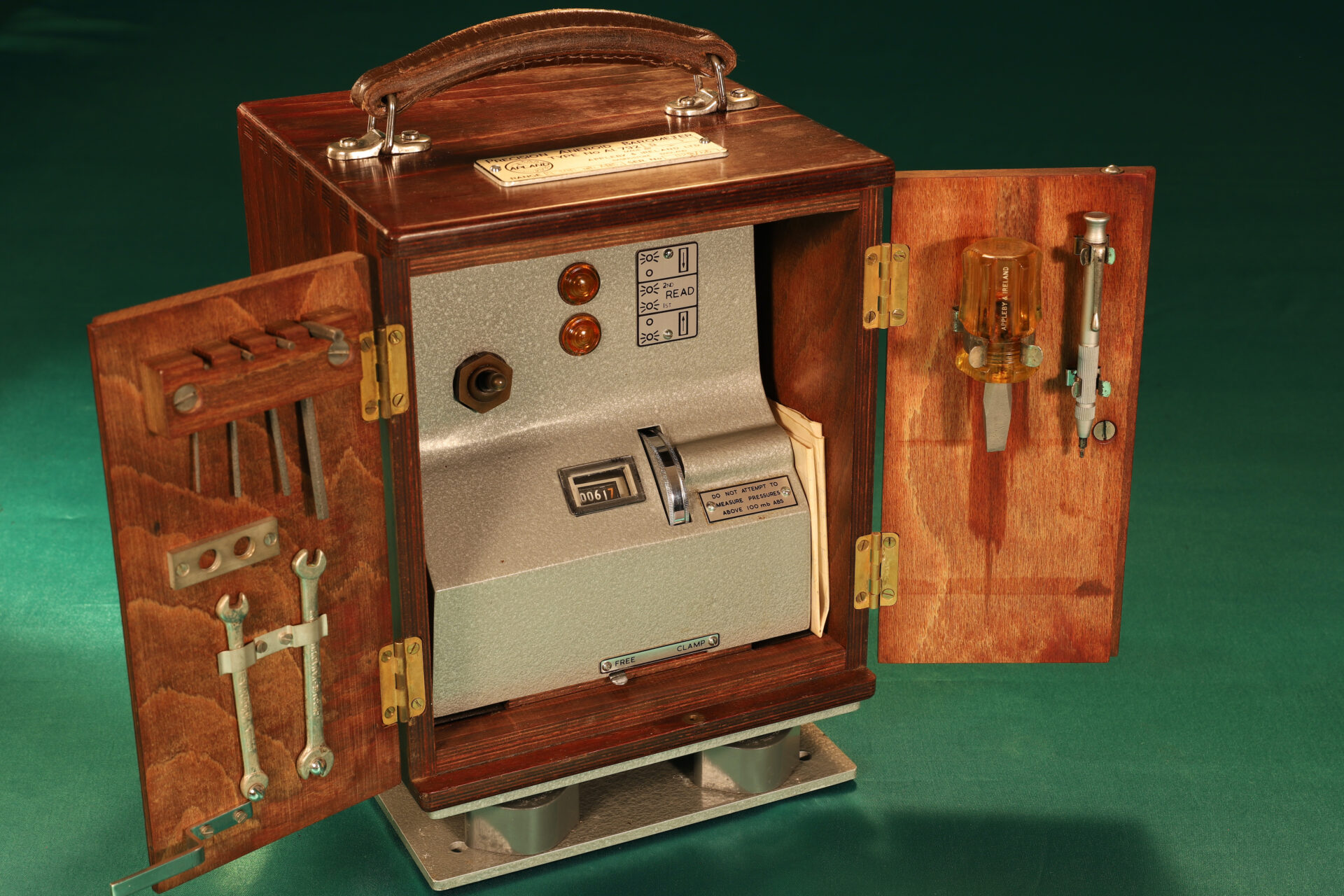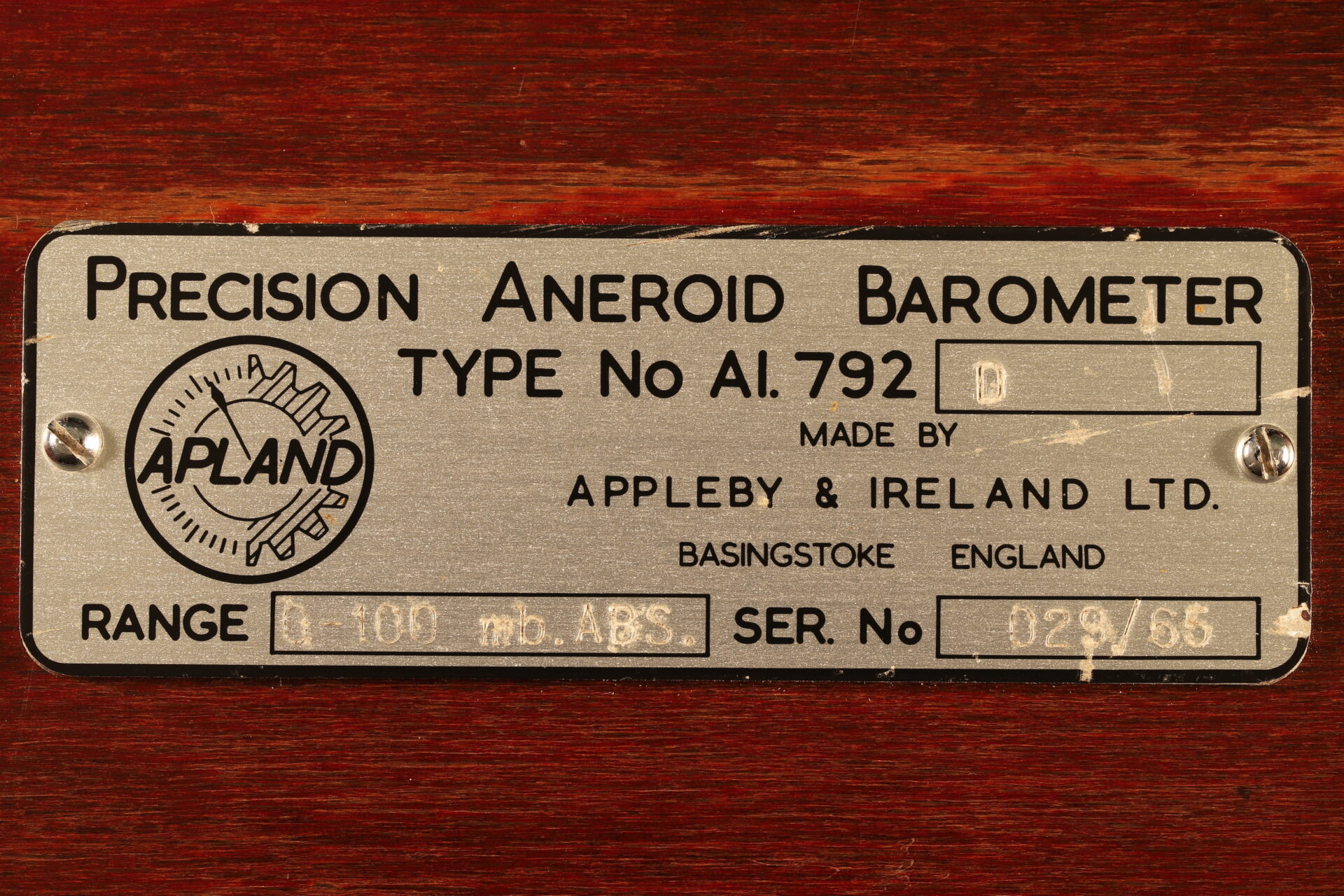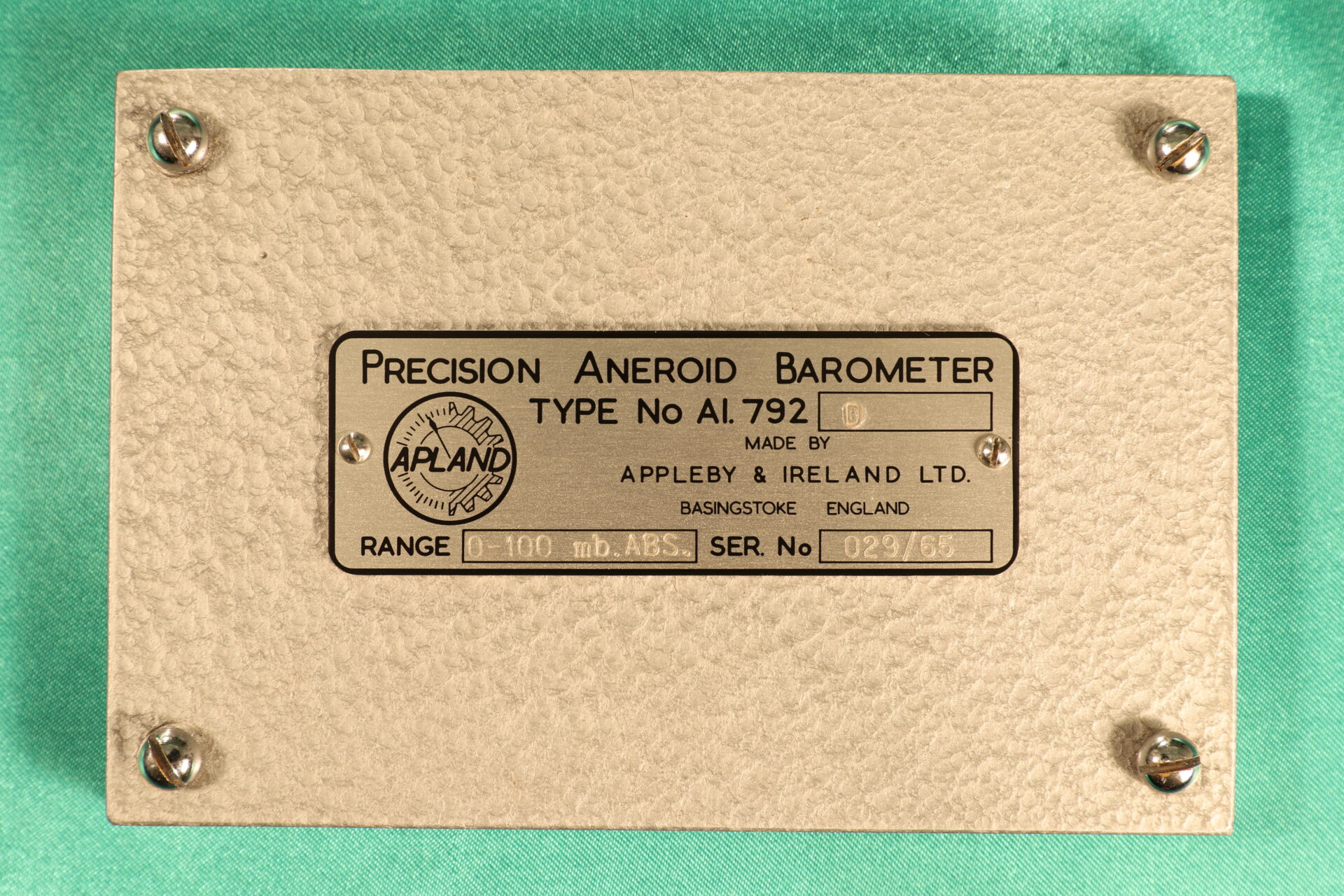



Precision aneroid barometer contained within a green hammerite finished cast aluminium case divided horizontally into two compartments: the upper with battery box for 1 x PP9, 1 x AA , forward position with solid state amplification card No PC. AI 0207, activation switch and twin orange filtered indicator lights. Removable top cover with makers ID plate and circuit diagrams inside. The lower compartment with sealed plenum chamber containing pressure sensing capsules, pressure sensing port with fine mesh filter and removable adaptor. Chrome micrometer adjusting wheel, digital counter, jewelled rocker electrical contact assembly.
All contained within plywood case, carry handle over, twin doors, the inner faces fitted with a complement of tools including allen keys, flat blade screwdriver marked “Appleby & Ireland,” two BA spanners, fine screwdriver by Moore & Wright. Side positioned shutter assembly affording access to pressure port. The whole mounted upon an anti-vibration chassis cushioned on four elliptical grey mountings with centred rubber bushes. Together with spare amplification circuit.
Operation: In essence the instrument relies on a simple switch, making and breaking a circuit in which two torch-type bulbs indicate the relative positions of the contact on top of the pressure sensing capsules and the adjustable rocker contact mechanically connected to the digital micrometer. The pressure to be measured will cause the sensor to expand or contract to a point where the constant forces within the sensor are balanced against the measured force/pressure. By means of a micrometer, the resultant expansion or contraction of the sensor may be measured thus. The operator is prompted by the orange lamps to rotate the micrometer wheel away from or towards him – when both lamps light, the pressure measured may be read from the digital counter. Accuracy is stated on the test certificate dated 31.12.71 to be 0.2Mb or less.
This is a similar system to those common to all Mechanism and later Negretti Aviation EMAs, one principal difference being that the Mechanism instruments read from the break point indicated by the change over of two LED indicators or the extension and contraction of an exclamation mark generated within a DM70 valve.
Comments: Two patents exist for this instrument: the US patent No 3,273,398 applied for on Aug 26th 1963 and granted 30th September 1966, the British Patent applied for in November 1962.
These instruments were offered in three specifications: those for meteorology with ranges 800 – 1050Mb, a second range 900 – 1050Mb, and a further range 0 – 100Mb for efficiency testing of steam turbines at the condenser. Known customers were the Central Electricity Generating Board, government research establishments and the Met Office. It would appear that Appleby & Ireland, the premier designer/manufacturers of pressure capsules, capsule stacks and diaphragms, as well as premium quality aircraft instruments and gauges for the fledgling nuclear industry, designed and manufactured this instrument in response to a requirement of the Met Office to replace its by then ageing, purely mechanical analogue aneroid instruments.
The AI Type 792 instrument performed so well as to be widely used as a pressure transfer standard. Essentially the patented measuring system eliminated any loads on the aneroid capsular sensing element, enhancing stability and accuracy as a result. The AI.792 easily passed military and civil testing, qualifying to military drop tests including 14 varied drops from 3’ onto concrete with <0.1Mb shift recorded. It could be transported at pressure equivalents of an altitude of 39,000’ without re-calibration.
It is interesting to note that Mechanism Ltd had commenced production of their EMAs as early as 1959 – these became widely adopted by government agencies across the world, later to be badged Negretti Aviation.
The Appleby & Ireland instrument bears many resembling characteristics, and it is most interesting that Mechanism Ltd do not appear to have defended their patent.
These EMAs represent the very finest in pressure sensing instruments based on the aneroid capsule, and must be viewed as the ultimate development of the Vidi aneroid barometer (1846). The design approaches, and arguably overcomes, the two basic flaws inherent in Vidi’s design, namely friction and the thermal effects of temperature. Interestingly, an Austrian Jakob Goldschmid (1870), in recognising the problems of friction in the standard mechanical amplification train, designed an aneroid barometer eliminating the mechanical linkages and chain. Changes in pressure observed within the instrument were made through a short optical magnification tube. The instrument was clumsy to use and, in the end, beyond practical operation.
Appleby & Ireland Ltd. was incorporated on November 15, 1951. The company was originally called Appleby & Ireland (Engineers) Ltd, but the name was shortened in 1953. The founders, all previously working for Kelvin Bottomley & Baird, were: Ernest Mark Hedworth Appleby, born 1921; Eric George Appleby, born 1928; Ernest Appleby, born 1898; John Yelveston Ireland, born 1922.
My sincere thanks to Simon Appleby for all his help and assistance, both on this fascinating instrument, and with the background for Appleby & Ireland.
Dimensions: 10” x 7” x 7”
Stock No: BA1673
Price: Vavasseur Archive - not currently for sale